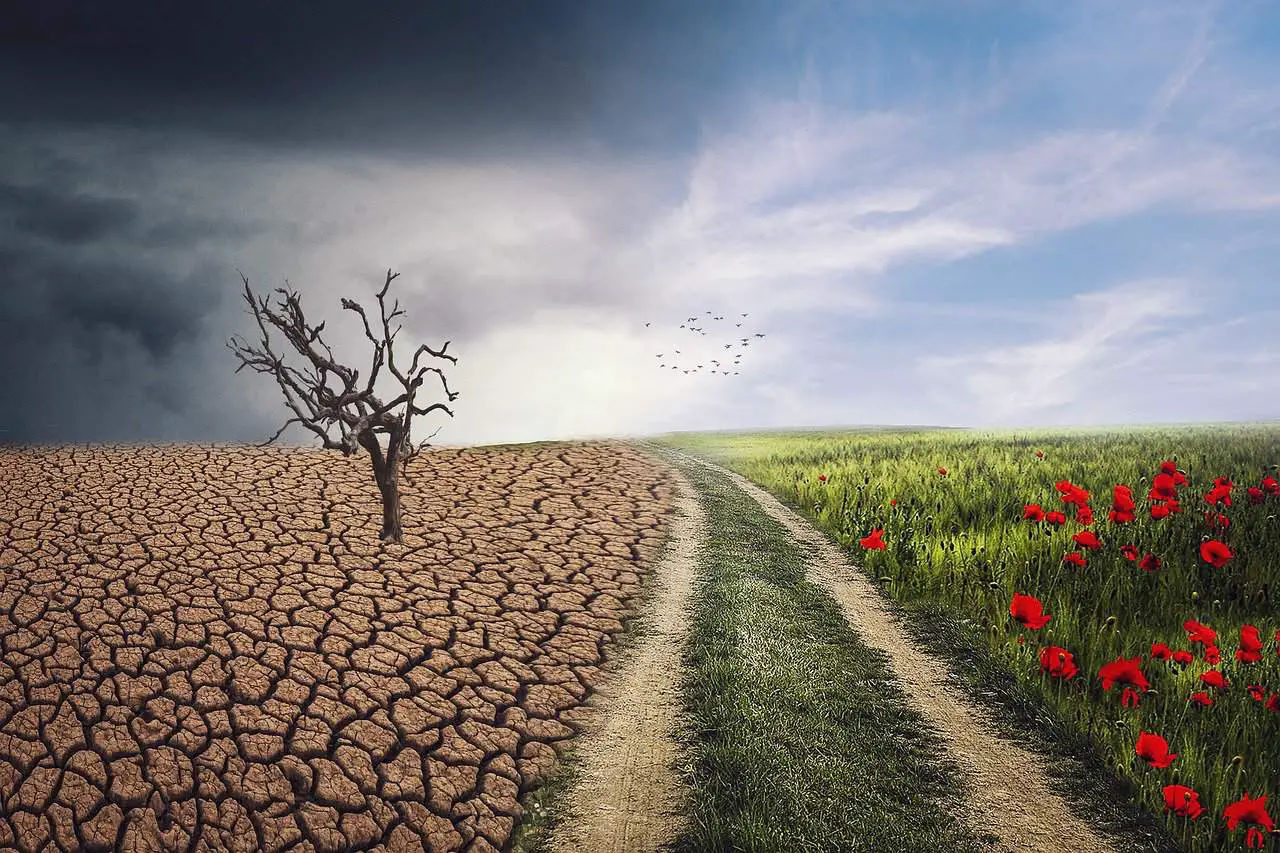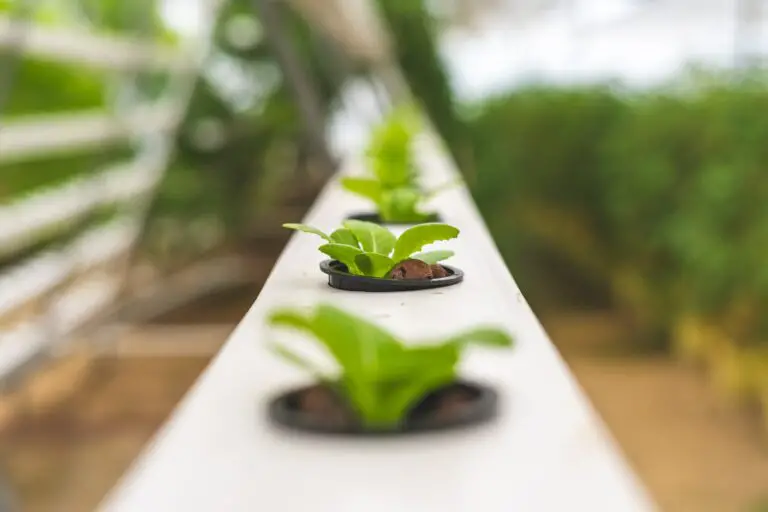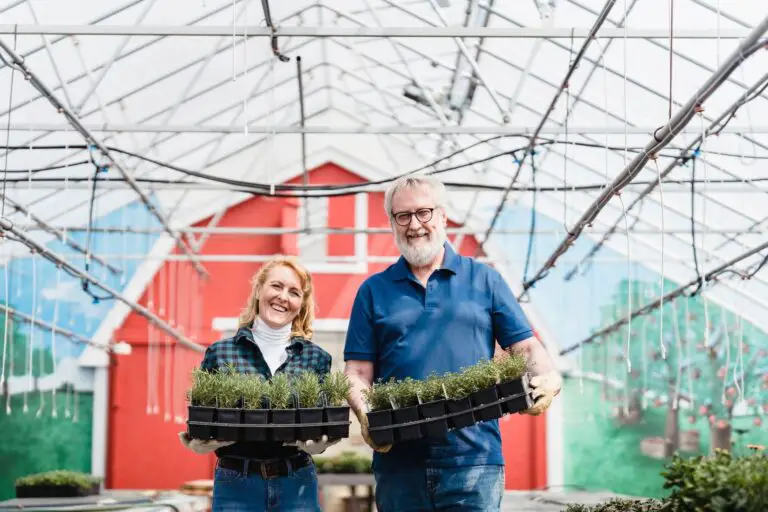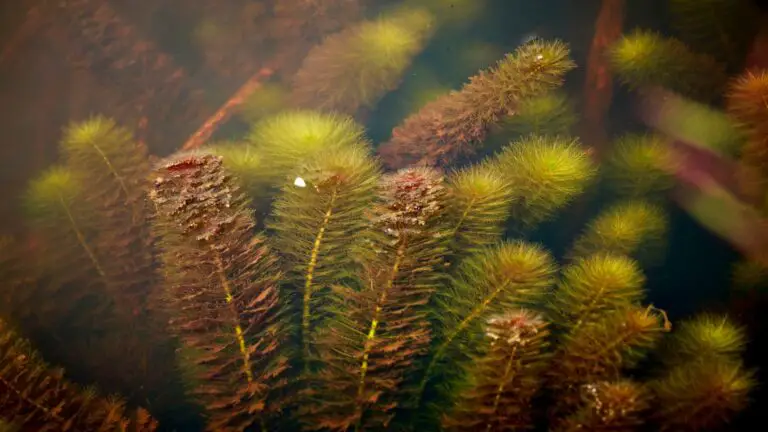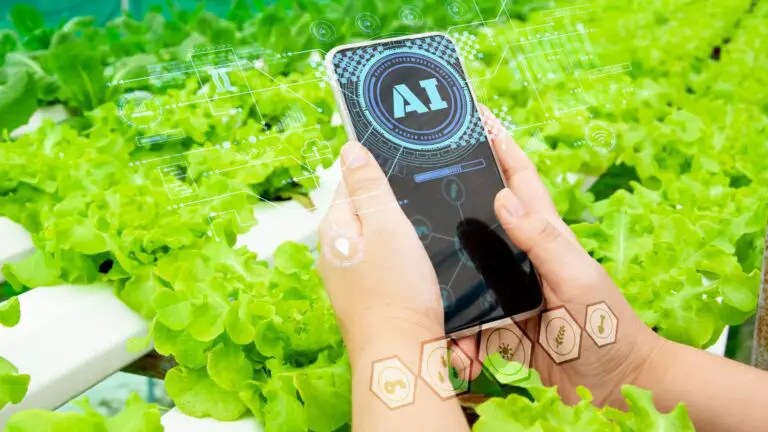Successful Hydroponics in Any Climate
Disclosure: Your purchases through our links may earn us a small commission, supporting our site’s ability to provide valuable information to our readers. Rest assured, it won’t impact your price. Thank you for your support.
If you’re like most hydroponics enthusiasts, you want to grow your plants in as many different climates as possible. But is this really feasible? Can hydroponics be successful in a variety of climates? The answer is yes – but it takes some careful planning and preparation.
This blog post will discuss how to make hydroponics work for you no matter your climate!
We’ll talk about the importance of choosing the right hydroponics system, the best plants, and how to adjust your hydroponics setup to accommodate changes in temperature and humidity. By the end of this post, you’ll be ready to take on hydroponics in any climate!
What Are the Various Climates on Earth, and Which Countries Reside in Them?
There are six main climates on earth: tropical, subtropical, temperate, continental, alpine, and polar.
- Tropical climates are found near the equator and typically have hot weather and high humidity. The countries with tropical climates include India, Brazil, and Indonesia.
- Subtropical climates are found in areas close to the tropics but typically have cooler weather than tropical climates. The countries with subtropical climates include the United States, China, and Argentina.
- Temperate climates are found in middle latitudes and typically have mild weather. The countries with temperate climates include the United Kingdom, France, and Germany.
- Continental climates are found in areas far from the ocean and typically have extreme weather conditions. The countries with continental climates include Russia, Kazakhstan, and Canada.
- Alpine climates are found in high elevations and typically have cold weather and low humidity. The countries with alpine climates include Switzerland, Austria, and Nepal.
- Polar climates are found near the earth’s poles and typically have icy weather conditions. The countries with polar climates include Greenland and Antarctica.
What Hydroponic System Works Well in Each Climate?
Choosing the right hydroponics system is essential for success in any climate. There are many different types of hydroponics systems available on the market, each with its strengths and weaknesses. Some systems are better suited for warm climates, while others do well in cooler temperatures. Research and experiment to find a system that will work well in your particular climate.
We will look into the best hydroponic system for each climate:
- Tropical Climates – hydroponic systems that work well in tropical climates typically have a lot of ventilation and are designed to keep the plants cool. A tropical climate is ideal because the weather conditions are conducive to plant growth and abundant sunlight. The Deep Water Culture (DWC) system efficiently keeps plants hydrated in hot, humid conditions. NFT (nutrient film technique) and ebb and flow systems are also some good examples of hydroponic systems for tropical climates.
- Subtropical Climates – hydroponic systems that work well in subtropical climates are typically have a lot of insulation and are designed to keep the plants warm. They can accommodate changes in temperature and humidity, making them ideal for subtropical conditions. Some good examples of hydroponic systems for subtropical climates include the DWC (deep water culture) and Ebb and Flow (Flood and Drain) systems.
- Temperate Climates – hydroponic systems that work well in temperate climates typically have a thermostat and are designed to maintain a consistent temperature. Some good examples of hydroponic systems for temperate climates include aeroponics and drip irrigation systems. These systems are very efficient at delivering nutrients to plants and can also tolerate temperature and humidity changes.
- Continental Climates – hydroponic systems that work well in continental climates typically have a lot of insulation and are designed to keep the plants warm. Some good examples of hydroponic systems for continental climates include the DWC (deep water culture), Nutrient Film Technique (NFT) system, and flood and drain systems. These systems are very efficient at delivering nutrients to plants and can tolerate extreme temperatures.
- Alpine Climates – hydroponic systems that work well in alpine climates typically have a lot of insulation and are designed to keep the plants warm. They are very efficient at delivering water and nutrients to plants and can tolerate cold temperatures. Some good examples of hydroponic systems for alpine climates include the Drip system, DWC (deep water culture), and flood & drain systems.
- Polar Climates – hydroponic systems that work well in polar climates typically have a lot of insulation and are designed to keep the plants warm. Some good examples of hydroponic systems for polar climates include the DWC (deep water culture) and flood and drain systems. The Aeroponic system is also the best hydroponic system for polar climates. This system is very efficient at delivering nutrients to plants and can tolerate freezing temperatures.
Further, the Kratky hydroponic system is suitable for climates with a wide range of temperatures. If you live in a warm climate, this system is perfect for you – it can accommodate most types of plants. If you live in a cooler climate, you may need to take some extra steps to protect your plants from the cold. However, the Kratky hydroponic system is still a great option for growing plants hydroponically in most climates.
Any climate can be suitable for hydroponics if the proper hydroponic system is used. You can successfully grow plants in any climate with the right hydroponic system! Researching the best hydroponic system for your particular climate is important before getting started is important.
Now let’s discuss the best method to grow hydroponically, indoors or outdoors.
Related:
Passive vs. Active Hydroponic Systems: What’s the Difference?
Is a Growing Medium Necessary for Hydroponic Systems?
Indoor or Outdoor?
Hydroponic systems can be either indoor or outdoor, but there are a few things to consider when deciding whether to grow hydroponically indoors or outdoors.
- Climate – If you live in a temperate area, you can grow hydroponically outdoors year-round. However, suppose you live in an area with extreme temperatures (either hot or cold). In that case, it is best to grow hydroponically indoors, where you can control the temperature and other environmental factors.
- Space – If you have a lot of outdoor space, you can build a large hydroponic system that can accommodate a lot of plants. However, if you have limited space, it is best to grow hydroponically indoors, where you can control the size of the system.
- Light – If you live in an area with a lot of sunlight, you can grow hydroponically outdoors and take advantage of the natural light. However, if you live in an area with limited sunlight, it is best to grow hydroponically indoors, where you can control the amount of light the plants receive.
Related:
The Top 11 Things to Know Before Buying a Grow Light
How Far Should Grow Lights Be From Plants That Are Growing Indoor
6 Amazing Benefits of Grow Lights for Your Indoor Hydroponic Garden
4 Common Types of Outdoor Hydroponic Systems
How to Grow Outdoor Hydroponics in Rain
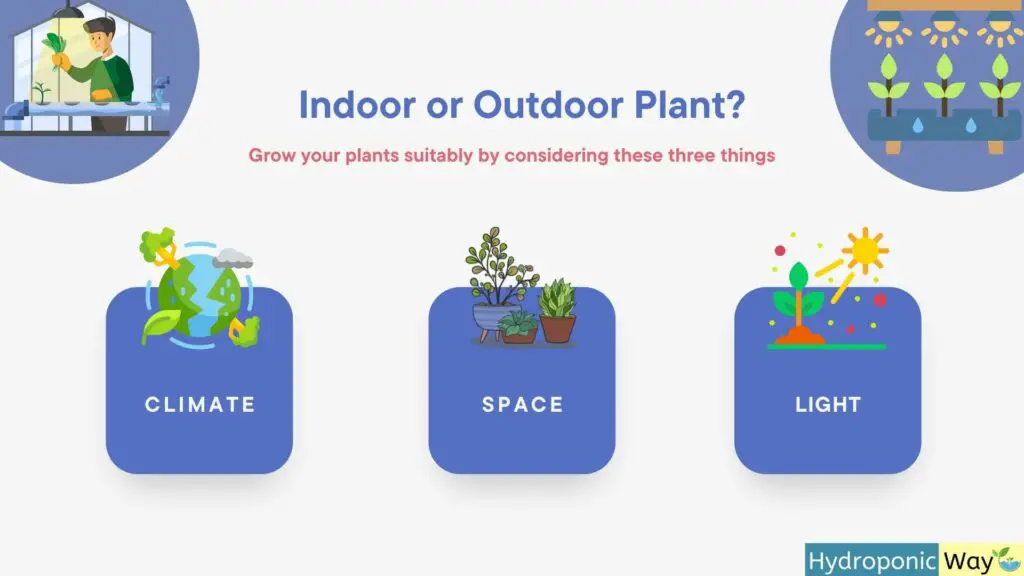
What Plants Perform Best in Hydroponics Under Different Climates?
The best plants for hydroponics vary depending on the climate.
If you live in a warm climate, you can grow almost any plant in hydroponics – from tropical fruits to leafy greens. In general, plants native to your area will do best in your hydroponics setup. However, there are some exceptions to this rule.
Cooler climates present more of a challenge, but there are still many plants that will do well in hydroponics. Do some research to find the best plants for your particular climate.
Related:
9 Plants That Germinate Great in Rockwool
Best Plants to Grow Under a Grow Light in Hydroponics
Can We Grow Certified Organic Hydroponic Plants?
How to Keep Plants Healthy in Any Climate Hydroponically?
The best way to keep plants healthy in any climate is to monitor the environment carefully and ensure that the plants get the proper amount of water, nutrients, and light.
It’s important to adjust your hydroponics setup to accommodate changes in temperature and humidity.
If you live in a climate with extreme temperatures, you’ll need to take steps to protect your plants from both the heat and the cold. In addition, you’ll need to monitor the humidity levels in your hydroponics system and ensure they stay within the ideal range for your plants. By taking these precautions, you can grow healthy plants in any climate!
Related:
How to Measure EC, pH, DO and Temperature in a Hydroponic System
What EC Means for Hydroponics
Does Grow Light Temperature Matter?
Do Grow Light Colors Matter?
Bottom Line
Now that you know the best hydroponic system for different climates and the factors to consider when deciding whether to grow hydroponically indoors or outdoors, how to take the initial step to choose the growing plant, and some tips to grow healthy plants in any climate.
Just be sure to choose the right hydroponic system for your particular climate and take steps to protect your plants from extreme temperatures. With the proper setup, you can successfully grow plants in any climate!
Hydroponics is a great way to grow plants, regardless of climate or space limitations. With some careful planning and preparation, you can successfully grow plants hydroponically in any climate! Give it a try today and see for yourself! We hope this post helps you to make the best decision for your needs.
Thank you for reading!
If you are looking to buy any hydroponic systems or any equipment you can select the best one suited for you.

